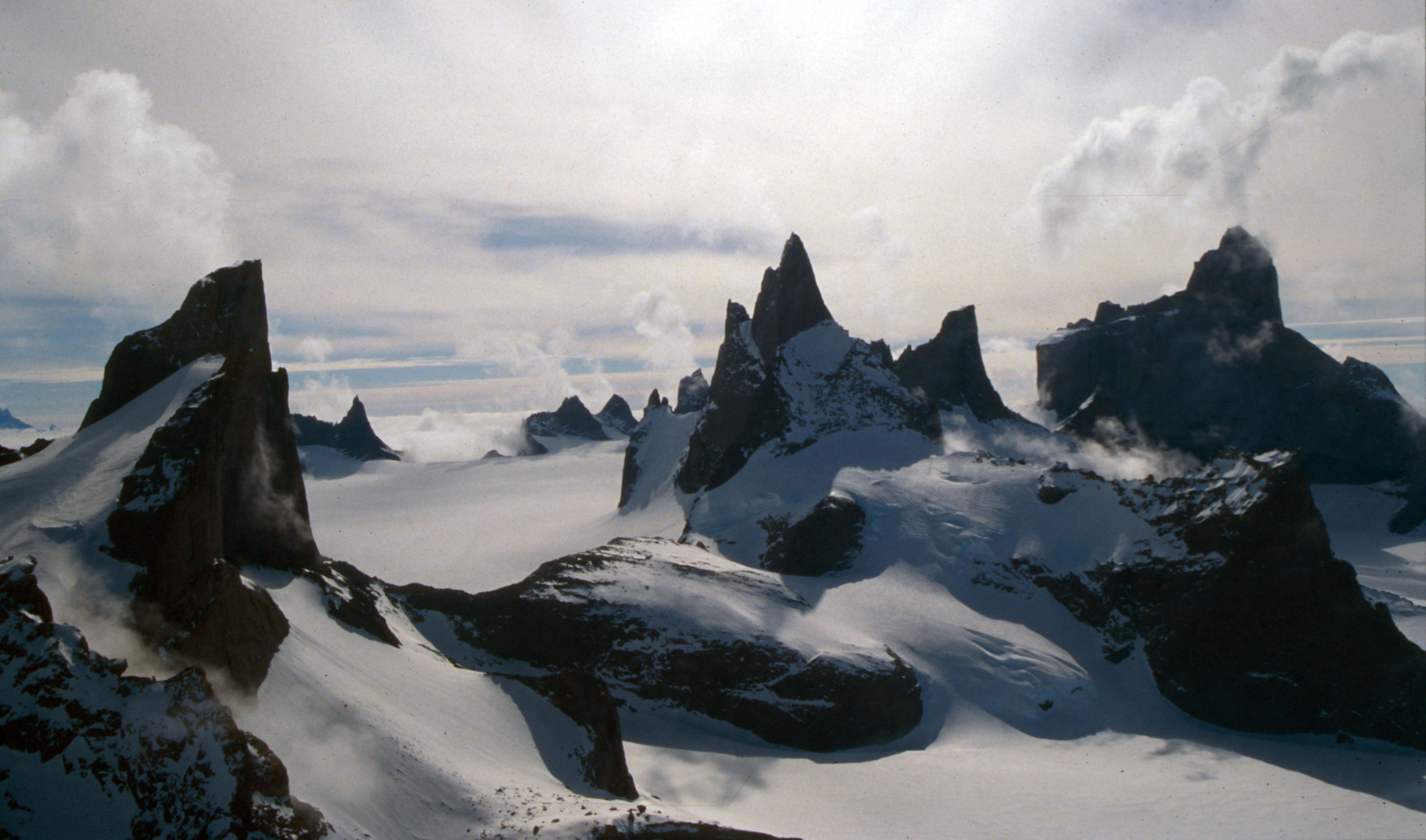|
Svelget
Svelget () is a cirque between Tunga Spur and Uven Spur in the Kirwan Escarpment The Kirwan Escarpment ( no, Kirwanveggen) is a prominent northwest-facing escarpment which lies south of the Penck Trough in Queen Maud Land, Antarctica. The escarpment is featured by moderate-height cliffs and prominent rock spurs interspersed ..., Queen Maud Land. Mapped by Norwegian cartographers from surveys and air photos by Norwegian-British-Swedish Antarctic Expedition (NBSAE) (1949–52) and additional air photos (1958–59), and named Svelget (the throat). Cirques of Queen Maud Land Princess Astrid Coast {{PrincessAstridCoast-geo-stub ... [...More Info...] [...Related Items...] OR: [Wikipedia] [Google] [Baidu] |
Kirwan Escarpment
The Kirwan Escarpment ( no, Kirwanveggen) is a prominent northwest-facing escarpment which lies south of the Penck Trough in Queen Maud Land, Antarctica. The escarpment is featured by moderate-height cliffs and prominent rock spurs interspersed with glaciers and steep ice slopes and trends northeast–southwest for about . At least the northern end of this feature (Neumayer Cliffs) was included in the aerial photography of the general area by the Third German Antarctic Expedition (1938–39), but the maps resulting from that expedition do not portray the escarpment properly. The escarpment was mapped by Norwegian cartographers from surveys and air photos (1958–59) and named for Laurence P. Kirwan, Director of the Royal Geographical Society The Royal Geographical Society (with the Institute of British Geographers), often shortened to RGS, is a learned society and professional body for geography based in the United Kingdom. Founded in 1830 for the advancement of geographical ... [...More Info...] [...Related Items...] OR: [Wikipedia] [Google] [Baidu] |
Tunga Spur
Tunga Spur is a prominent rock spur extending from the Kirwan Escarpment just southwest of Gommen Valley, in Queen Maud Land Queen Maud Land ( no, Dronning Maud Land) is a roughly region of Antarctica claimed by Norway as a dependent territory. It borders the claimed British Antarctic Territory 20° west and the Australian Antarctic Territory 45° east. In addit .... Mapped by Norwegian cartographers from surveys and air photos by Norwegian-British-Swedish Antarctic Expedition (NBSAE) (1949–52) and additional air photos (1958–59), and named Tunga (the tongue). Ridges of Queen Maud Land Princess Astrid Coast {{PrincessAstridCoast-geo-stub ... [...More Info...] [...Related Items...] OR: [Wikipedia] [Google] [Baidu] |
Uven Spur
Uven Spur () is a small rock spur just southwest of Tunga Spur Tunga Spur is a prominent rock spur extending from the Kirwan Escarpment just southwest of Gommen Valley, in Queen Maud Land Queen Maud Land ( no, Dronning Maud Land) is a roughly region of Antarctica claimed by Norway as a dependent terr ..., extending from the Kirwan Escarpment in Queen Maud Land, Antarctica. It was mapped by Norwegian cartographers from surveys and air photos by Norwegian-British-Swedish Antarctic Expedition (NBSAE) (1949–52) and additional air photos (1958–59), and named Uven. Ridges of Queen Maud Land Princess Astrid Coast {{PrincessAstridCoast-geo-stub ... [...More Info...] [...Related Items...] OR: [Wikipedia] [Google] [Baidu] |
Queen Maud Land
Queen Maud Land ( no, Dronning Maud Land) is a roughly region of Antarctica claimed by Norway as a dependent territory. It borders the claimed British Antarctic Territory 20° west and the Australian Antarctic Territory 45° east. In addition, a small unclaimed area from 1939 was annexed in June 2015. Positioned in East Antarctica, it makes out about one-fifth of the continent, and is named after the Norwegian queen Maud of Wales (1869–1938). In 1930, the Norwegian Hjalmar Riiser-Larsen was the first person known to have set foot in the territory. On 14 January 1939, the territory was claimed by Norway. On 23 June 1961, Queen Maud Land became part of the Antarctic Treaty System, making it a demilitarised zone. It is one of two Antarctic claims made by Norway, the other being Peter I Island. They are administered by the Polar Affairs Department of the Norwegian Ministry of Justice and Public Security in Oslo. Most of the territory is covered by the east Antarctic ic ... [...More Info...] [...Related Items...] OR: [Wikipedia] [Google] [Baidu] |
Cirques Of Queen Maud Land
A (; from the Latin word ') is an amphitheatre-like valley formed by glacial erosion. Alternative names for this landform are corrie (from Scottish Gaelic , meaning a pot or cauldron) and (; ). A cirque may also be a similarly shaped landform arising from fluvial erosion. The concave shape of a glacial cirque is open on the downhill side, while the cupped section is generally steep. Cliff-like slopes, down which ice and glaciated debris combine and converge, form the three or more higher sides. The floor of the cirque ends up bowl-shaped, as it is the complex convergence zone of combining ice flows from multiple directions and their accompanying rock burdens. Hence, it experiences somewhat greater erosion forces and is most often overdeepened below the level of the cirque's low-side outlet (stage) and its down-slope (backstage) valley. If the cirque is subject to seasonal melting, the floor of the cirque most often forms a tarn (small lake) behind a dam, which marks the down ... [...More Info...] [...Related Items...] OR: [Wikipedia] [Google] [Baidu] |

